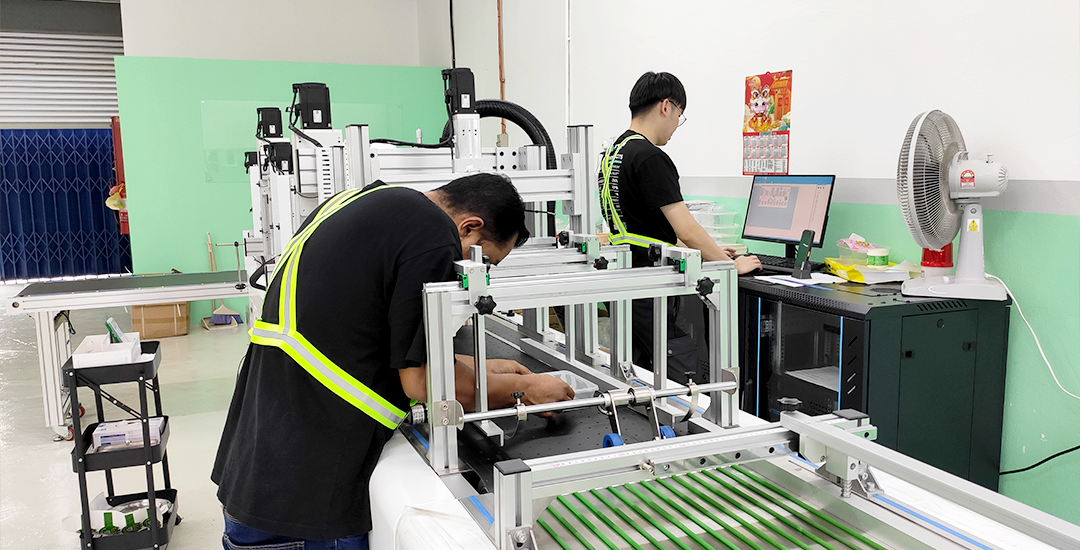This guide will help you maximize uptime and laser marking quality. Learn daily, weekly, and annual maintenance steps to extend your machine’s lifespan and prevent costly breakdowns.
Introduction
Laser marking machines are precision tools used across industries like aerospace, automotive, and medical device manufacturing. However, dust, misalignment, or worn components can degrade mark quality and lead to downtime. Regular maintenance isn’t just optional—it’s critical for consistency, compliance, and ROI. This guide breaks down simple, actionable steps to keep your laser marker in peak condition, whether it’s a fiber, CO2, or UV laser system.
Tools You’ll Need
- Lint-free wipes (isopropyl alcohol-safe)
- Compressed air or nitrogen gas
- Laser power meter
- Alignment jig or test grid
- Manufacturer-recommended lubricants
- Protective gloves and safety glasses
Step 1: Daily Maintenance
1.1 Clean the Lens and Mirrors
- Why: Dust or residue scatters the laser beam, causing faint or uneven marks.
- How:
- Power off the machine.
- Gently wipe lenses/mirrors with lint-free cloth and isopropyl alcohol (IPA).
- Use compressed air to blow debris from internal optics.
1.2 Check Gas Assist Systems
- Why: Fiber lasers use nitrogen/air assist to prevent oxidation during marking.
- How: Ensure gas pressure is stable (refer to machine manual for PSI settings).
1.3 Inspect Marking Samples
- Run a test mark on scrap material. Look for inconsistencies in depth, contrast, or alignment.
Step 2: Weekly Maintenance
2.1 Clean the Work Area and Exhaust
- Vacuum metal shavings, dust, or debris from the marking bed and exhaust filters.
2.2 Lubricate Moving Parts
- Apply light machine oil to rails, screws, or gantries (avoid over-lubrication).
2.3 Calibrate Laser Power
- Use a laser power meter to verify output matches settings. Adjust if power drops >10%.
Step 3: Monthly Maintenance
3.1 Check Optical Path Alignment
- Why: Misaligned mirrors divert the laser beam, reducing precision.
- How:
- Use an alignment jig or test grid.
- Adjust mirror mounts until the beam centers on all mirrors and focal lens.
3.2 Inspect Cooling Systems
- For water-cooled lasers:
- Check coolant levels and purity (replace if contaminated).
- Clean radiator fins from dust buildup.
Step 4: Annual Maintenance
4.1 Replace Consumables
- Parts to swap: Laser tube (CO2), focus lens, fume extraction filters.
4.2 Update Software
- Install firmware/software updates for bug fixes, new features, or compatibility.
4.3 Professional Servicing
- Schedule a technician to inspect electrical components, laser source, and safety interlocks.
Common Issues & Troubleshooting
| Problem | Likely Cause | Fix |
| Faint marks | Dirty lens/low power | Clean optics, recalibrate power |
| Uneven marking depth | Misalignment | Realign optical path |
| Overheating | Clogged cooling system | Flush coolant, clean radiators |
| Software errors | Outdated firmware | Update software |
Pro Tips for Longevity
- Avoid overworking: Don’t exceed the laser’s duty cycle (e.g., 70% power for 24/7 use).
- Use quality materials: Cheap lenses or gases accelerate wear.
- Track maintenance logs: Note dates of cleaning, part replacements, and issues.
Case Study: Preventing Downtime
Scenario: A medical device manufacturer faced weekly downtime due to inconsistent UDI marks.
Root Cause: Dust buildup on lenses and uncalibrated laser power.
Solution: Implemented daily cleaning and monthly power checks.
Result: 90% reduction in downtime and zero FDA rejections in 6 months.
Routine maintenance of laser marking machines ensures precision, compliance, and longevity. By following these daily, weekly, and annual steps, you’ll avoid costly repairs, extend your machine’s lifespan, and maintain flawless mark quality—critical for industries like aerospace and healthcare.

